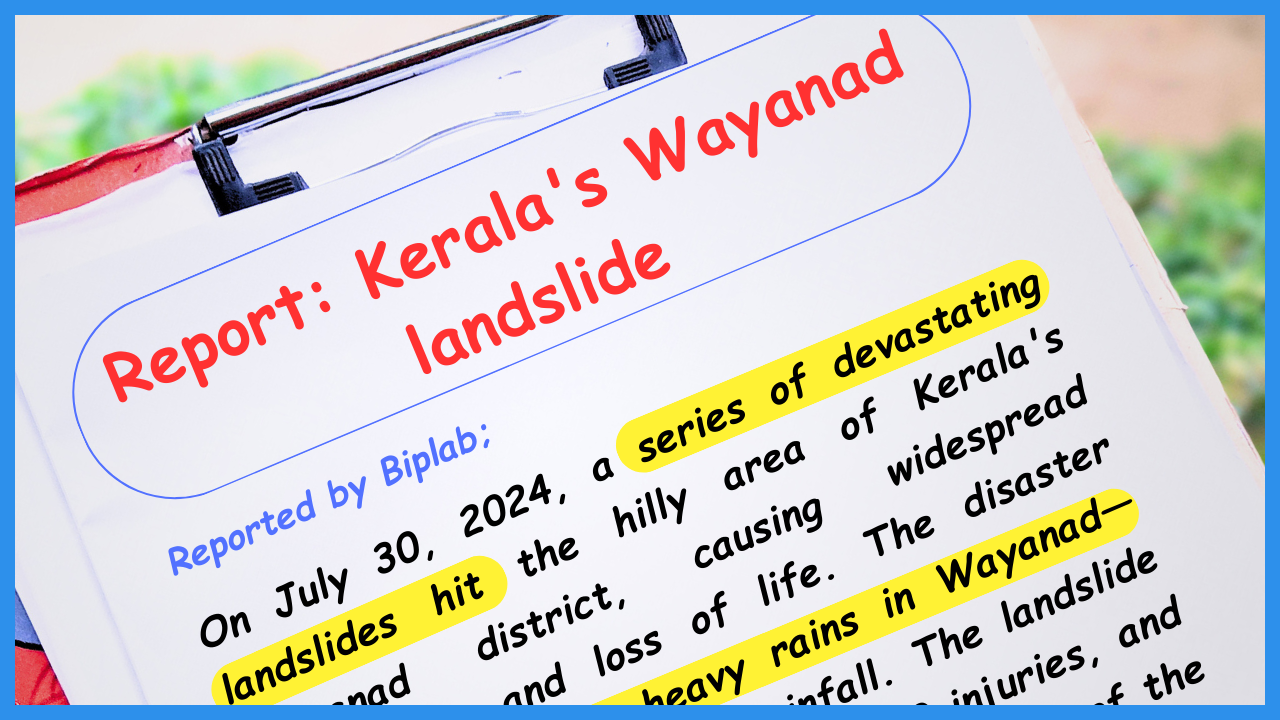Recently, Kerala has witnessed one of the deadliest landslides in its history. Several people have lost their lives, and hundreds are missing. Rescue operations are ongoing.
This blog will guide you in writing a report on the Kerala landslide. This topic is very important for your examination; it can also come as an unseen passage.
If you have any questions related to this topic, please leave a comment.
Report writing on Kerala’s Wayanad landslide
Title: 334 dead, 200 injured devastating landslide in Kerala
On July 30, 2024, a series of devastating landslides hit the hilly area of Kerala’s Wayanad district, causing widespread destruction and loss of life. The disaster was triggered by heavy rains in Wayanad—more than 500 mm of rainfall.
The landslide has claimed 334 lives, over 200 injuries, and left 276 people missing, making it one of the deadliest natural disasters in Kerala’s history. Search and rescue operations are ongoing to find survivors and recover the bodies of those who did not survive. The most significant impact was observed in Mundakkai and Chooralmala villages.
The rescue operation involved various agencies, including the Indian Army, the Kerala State Relief Team, and the National Disaster Response Force (NDRF). In Mundakkai village, which was cut off from the rest of the district, rescuers have erected makeshift bridges and pulleys over rivers to transport stranded people to safety. However, the lack of proper roads or bridges has hindered the rescue efforts.
The landslides have also destroyed homes and infrastructure, leaving many without shelter or basic necessities. In response, the Kerala government has established 45 relief camps in Wayanad, providing shelter to more than 3,000 displaced individuals.
Prime Minister Narendra Modi announced payments of ₹2 lakh to relatives of the dead and ₹50,000 to each injured. The Kerala government also opened a relief fund to fight this disaster, and several wealthy people came forward to help.
The tragedy has left entire communities in mourning, and the human cost of the disaster is immense. As the rescue efforts continue, the focus is on providing medical aid, shelter, and essential non-food items to the affected communities.
The landslides in Wayanad serve as a stark reminder of the importance of disaster preparedness and the need to address the underlying factors that contribute to such tragedies, such as climate change and environmental degradation.
